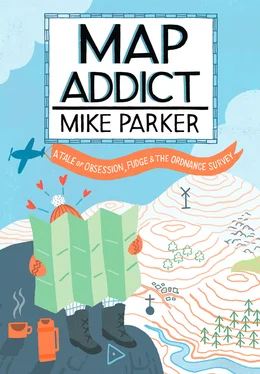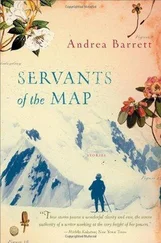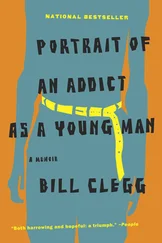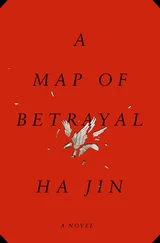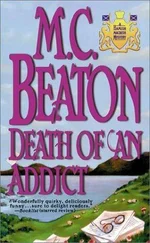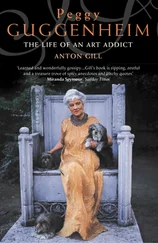Both of my choices are beautiful works, but I love them mainly for being such remarkable snapshots of a very specific moment in time. They are graphic, lavishly detailed pictures of the world into which I was born at the tail end of 1966. No one knew it then, but they represent a world on the cusp of fundamental cataclysm. Our industrialised island, crammed full of mines and quarries and factories and railways, was shortly to become a post-industrial place of shopping centres, theme parks, light industrial estates and speedy roads. Nineteen-sixty six was the border between those two worlds, the year that saw both the last, gruesome gasp of the old order at Aberfan, and the sapling stirrings of our future economy, a leisure industry kick-started by the English victory in the football World Cup. It was the beginning of the era when the future ceased to be the national fetish, to be replaced, ultimately and ominously, by a slavish obsession with the past.
The battle between the future and the past raged through the late 1960s and the entire 1970s, through psychedelia, sexual liberation, student uprisings, strikes, power cuts and punk, but by the time the 1980s dawned, the past had won. Margaret Thatcher, the Grantham grocer’s daughter, invoked the Britain of a bygone age to anaesthetise us to everything, from small colonial wars to her battle to destroy organised labour. Nostalgia became a driving force of the economy: the backdrop to the breakneck changes that we choose to remember is ‘Ghost Town’ and Orgreave, but it could just as easily have been the multimillion selling Country Diary of an Edwardian Lady or the spin-off frills and frou-frou by the likes of Laura Ashley. The landscape, and hence maps, began to change too: town centres, the mercantile heart of the nation for over a thousand years, wilted in the heat of the new retail parks that were mushrooming alongside new bypasses and motorways. Heritage centres, heritage railways, industrial heritage, history denuded of its scandal and gore, erupted all over the country like a pox rash.
Just how much Britain has changed in a couple of generations is witheringly evident from these two books. The Reader’s Digest Complete Atlas of the British Isles is a huge tome: 230 A3-sized pages of maps, charts, diagrams, illustrations and tiny text showing the geography of these islands in every imaginable detail, social, cultural, industrial and political, a generation on from the end of the Second World War. The book was a mammoth undertaking: the committee of consultants, listed on the second page, comprises 118 individuals and organisations, from the Ministry of Power to L. P. Lefkovitch, BSc, of the Pest Infestation Laboratory in Slough; Professor H. C. Darby, OBE, MA, PhD, LittD, to Éamonn de hóir (a mere MA) of the Ordnance Survey, Ireland. It includes a loose-leaf insert designed to promote the book, a document that oozes 1960s paternalism at its most lordly. On one side, three experts (two of whom sport florid Edwardian moustaches) sing the volume’s praises; on the other is a long list of questions, the answers to which can be found on pinpointed pages of the atlas.
‘Do you know…’ it asks, as if peering beadily at the reader over its half-moon glasses, ‘how long a Queen Ant lives? (page 110)’. Hurry to page 110, and there’s your response: ‘ten years’. ‘Where the Moscow-Washington “Hot Line” enters Britain? (page 151)’, ‘Which was the first stretch of motorway to be built in Britain? (page 147)’, ‘Where the first known human in Britain dwelt? (page 77)’, ‘The rate of air traffic at London Airport? (page 144)’ and ‘On what date the Earth is farthest from the Sun? (page 90)’. The answers being: Oban; the eight and a half miles of the Preston bypass in 1958; Swanscombe in Kent; every two and a half minutes in summer, three and a half in winter; and July 2-4.
Another section headed ‘Where in the British Isles…’ continues with such questions as: ‘…did dinosaurs live? (page 74)’, ‘…are there oil wells? (page 153)’, ‘…are the most crimes committed? (page 134)’ and ‘…do they say “mash the tea”? (page 123)’. That’ll be Dorset, Nottinghamshire, Greater London and (oddly) Flintshire, and finally, most of the Midlands and north of England.
The book is a pub quiz of gargantuan proportions. Every page has you tutting in surprise and oohing in wonder, and occasionally laughing at the chest-puffed earnestness of it all, the world as seen from the gentlemen’s clubs of SW1. According to the atlas, not only do we ‘mash the tea’ where I grew up, we say ‘I be…’ rather than ‘I am…’, drop our aitches, call a funnel a ‘tundish’ and get as pissed as an askel, rather than a newt, all of which was news to me. The most wildly diverse regional expressions seem to be for the concept of left-handedness, or keck-handedness as we had it in Worcestershire (that I do remember). Just be grateful you’re not left-handed in the Pennines (dollock- or bollock-fisted), Durham (cuddy-wifted), Galloway (corrie-flug) or Angus (kippie-klookit).
The Britain of 1966 was a nation still toiling and grafting and knowing its place. A double-page map of ‘Birthplaces of Notable Men and Women of the Past’ indicates that most of our Notable People seem strangely to have originated in the south of England: there are as many given for Somerset as for the whole of Wales (the Welsh notables, of course, do not include anyone successful only in a Welsh capacity; to warrant inclusion, they must have made it big in London or the Empire, such as Lloyd George, T. E. Lawrence ‘of Arabia’ and H. M. Stanley). And absolutely no one of worth, at least to a Reader’s Digest editor, has ever emerged from Westmorland (the only English county in this ignominious list), Anglesey, Merionethshire, Cardiganshire, Carmarthenshire, Radnorshire, Flintshire, or the old Scottish counties of Wigtown, Kirkcudbright, Berwick, Peebles, West Lothian, Argyll, Bute, Kinross, Stirling, Kincardine, Banff, Nairn, Inverness, Ross and Cromarty, Sutherland, Caithness, Orkney or Shetland.
Of all the things that have most changed in the forty years since the atlas’s publication, the transport routes it portrays are the most pronounced. The infant motorway network comprised only four open routes (the M1 from Watford to Nottingham, the M2 bypassing the Medway towns and Sittingbourne, the M6 from Stafford to Preston and the reverse L of the M5/M50 from Bromsgrove to Ross-on-Wye); an optimistic map of the network to come fills in the gaps. The fact that the M5 and M6 were tarmac reality before the M3 and M4 harks back—as the map so prettily demonstrates—to the original numbering system for British A roads, where the country was divided by spokes radiating out from London. The A1 went straight up to Edinburgh, the A2 to Dover, so that all main roads between the two were numbered A1x or A1xx. The A2s were between Dover and Portsmouth, the A3s a long tranche right to the far end of the West Country, the A4s a giant wedge that took in most of the Midlands and Wales, the A5s everything between the lines from London to Holyhead and Carlisle, and the A6s the remaining backbone of England, back round to the A1. The last three numbers—A7, A8 and A9—are Scottish-only roads that were similarly centred on Edinburgh. I’m half expecting to hear from some indignant Welsh radical demanding a couple of the numbers to be reapportioned to Cardiff.
On the opposite page of this plan for the future is a rather starker image of the past, in the shape of the railway network that, by the mid 1960s, was contracting fast. Much as I squirm at the admission, I know that if I could magically transport myself into another age for a week, it wouldn’t be for a bystander’s view of the Battle of Hastings or the Last Supper, but seven glorious days, probably in May, trundling around Britain’s pre-Beeching railway network. From the very first day of my infatuation with the Ordnance Survey maps of the 1970s, it was the text reading ‘Course of old railway’ that most caught my eye, next to those spectral dashed lines tiptoeing their way across the countryside like the slug trails of history.
Читать дальше
